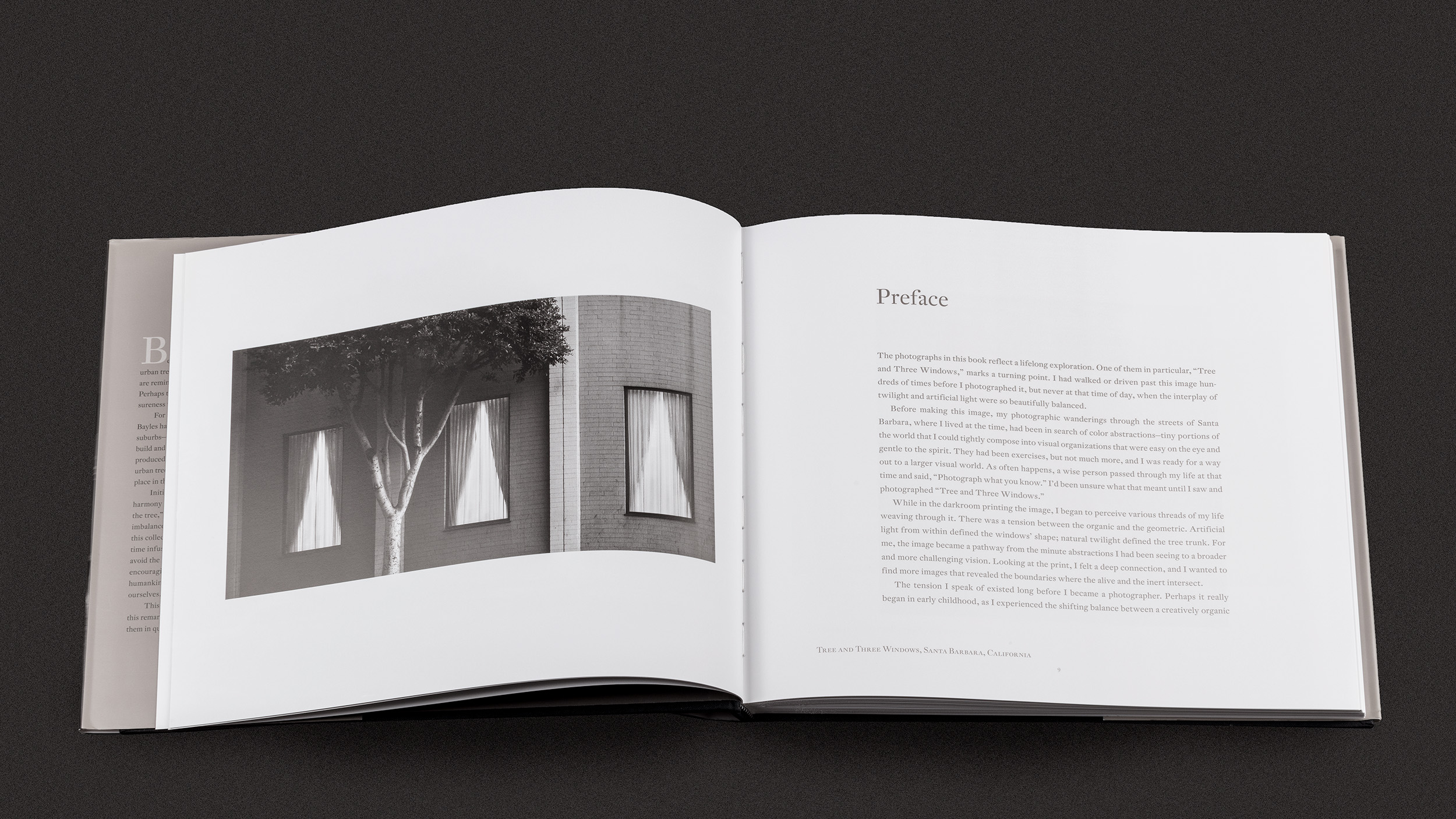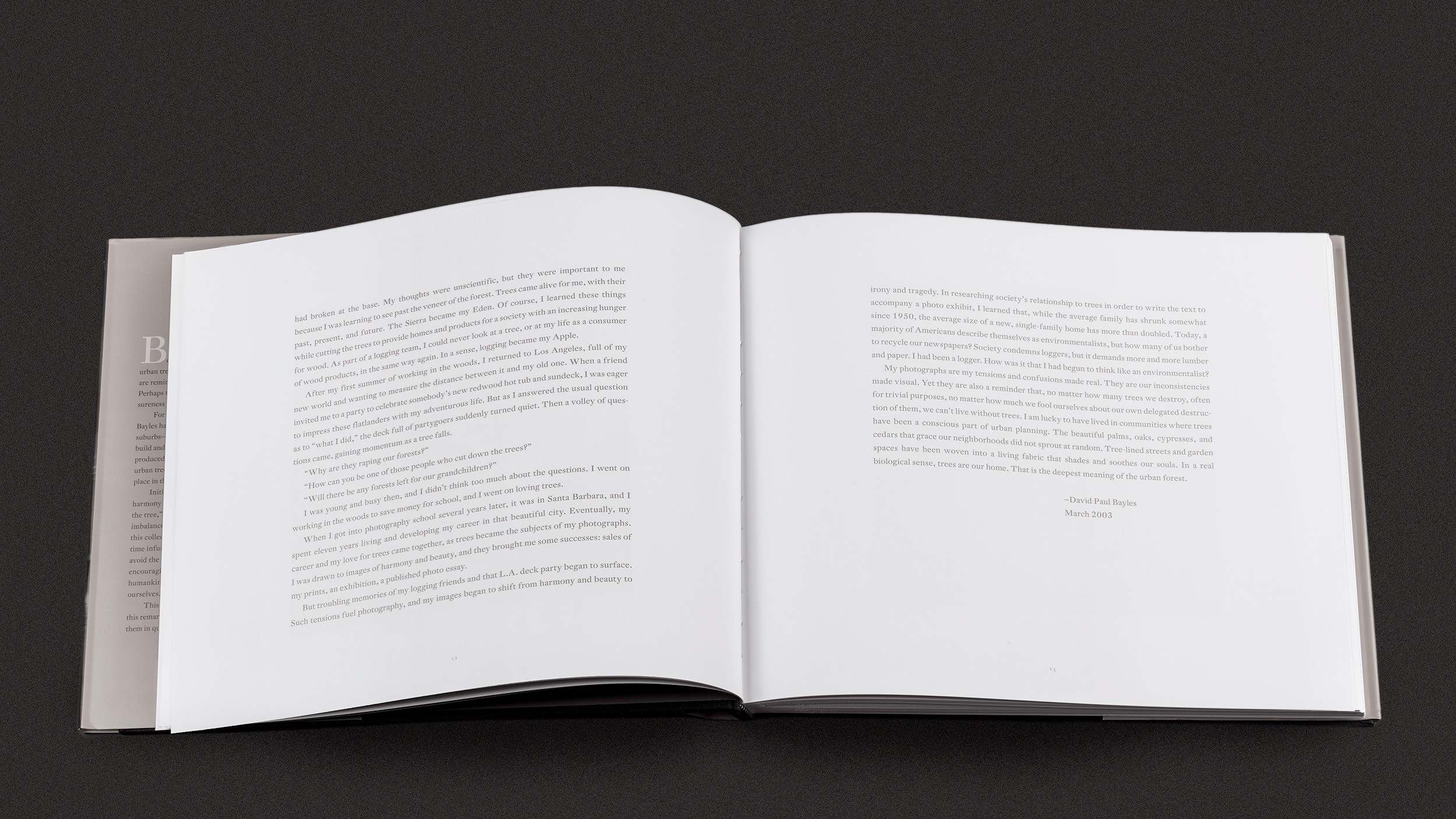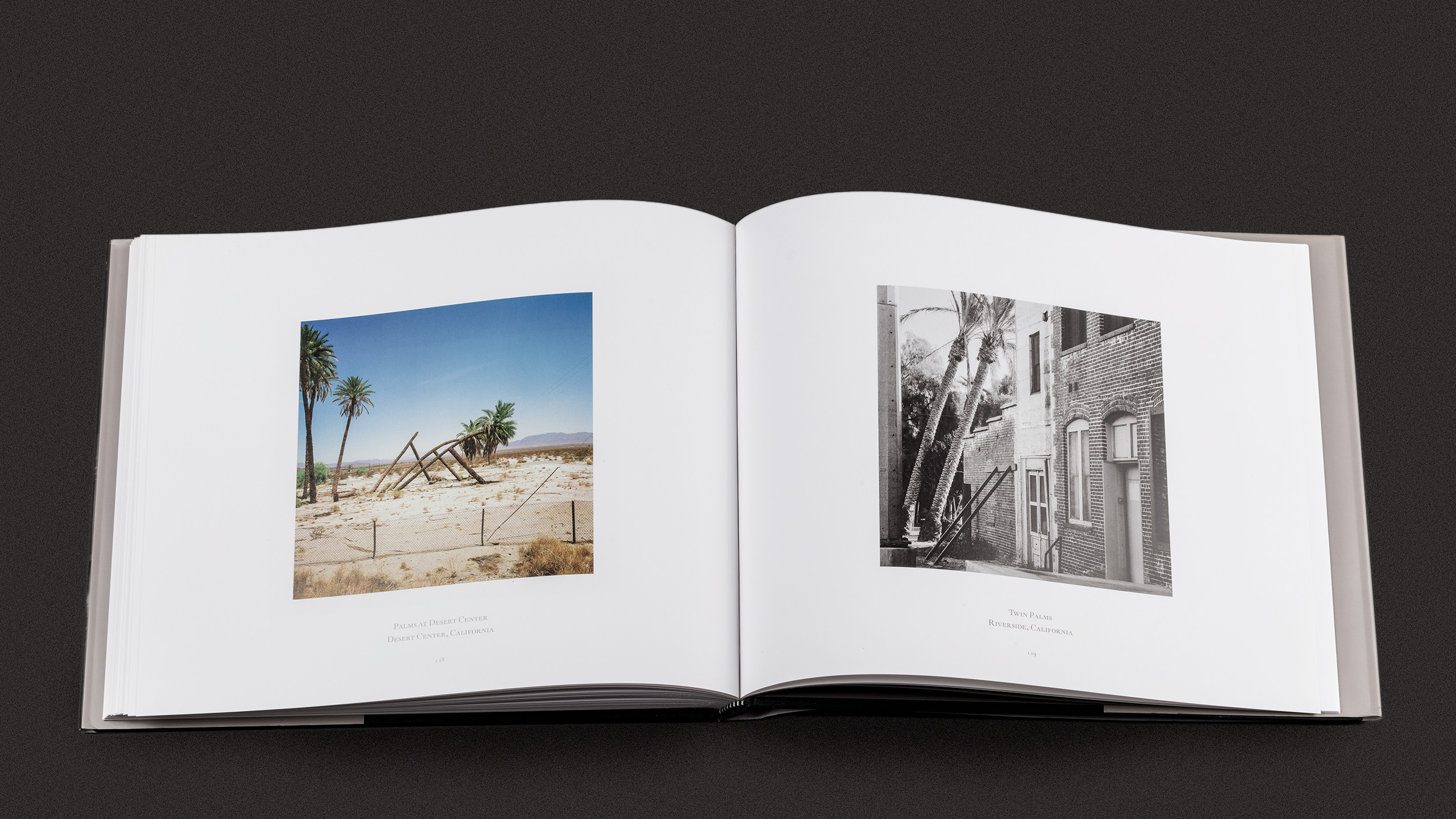In December of 2003 The Monitor selected Urban Forest as one of the seven best photography books of the year.
“ ... Bayles’ images of trees avoid the trap of propaganda; these are not cute or angry or tragic surrogates for human politics. Instead, they seem weirdly like visitors from another world, perhaps another dimension -- and, in a real sense, they are. Trees, no less than epoch-layered rock canyons, remind us that there are different ways of computing time; that within the frantic rush of man-made cities are eddies and rills of slowness, sureness; that there are cycles as profound as the procession of the stars...”
-- Richard Cheverton 2002
New, signed first edition. Price includes USPS Media Rate shipping and handling in United States and Canada.
To see actual book pages, read description and reviews URBAN FOREST
Art of the Wild For those of us who live in cities or suburbs, nature is often an invisible backdrop. In his ethereal and amusing new book, Urban Forest: Images of Trees in the Human Landscape, photographer David Paul Bayles shows the different trees (and sometimes trunks and limbs) in our midst. Urban Forest offers a revealing look at society’s relationship with nature. This striking selection of photos, gathered over two decades, displays what Bayles calls ‘a tension between the organic and the geometric” and the various ways architecture and urban landscapes reflect the natural world. Urban Forest also reminds us that remnants of wild nature persist all around us; Bayles’s images testify to nature’s fragility and resilience.
— Lindsay Carswell 2003
"Bayles has done a fine job with this book, which reminds us all of a simple but persistent fact: Trees are as essential to human life as the oxygen they produce or the beauty they present or the shelter they provide. Being an urban dweller for most of my life, I was struck by the innovative techniques the photographer used to reveal the extraordinary in the ordinary. Through his lens, we perceive our surroundings in new and often instructive ways."
—John A. Murray 2003




















